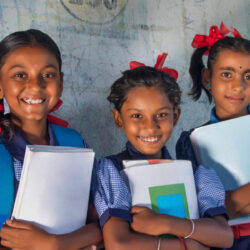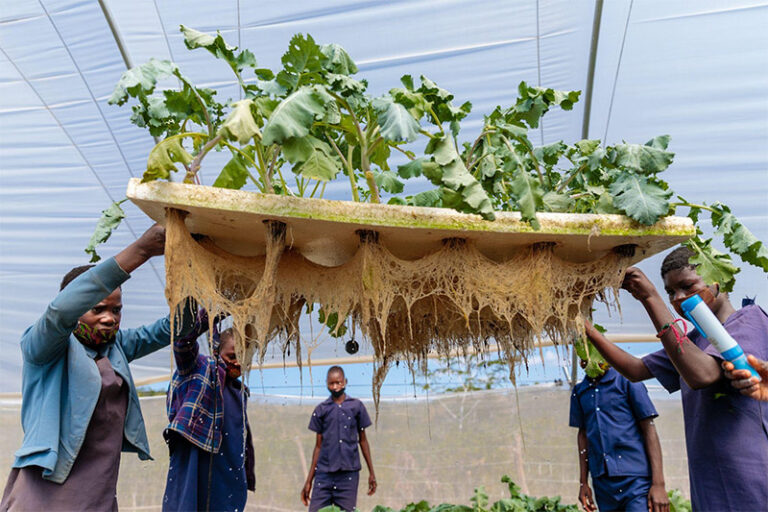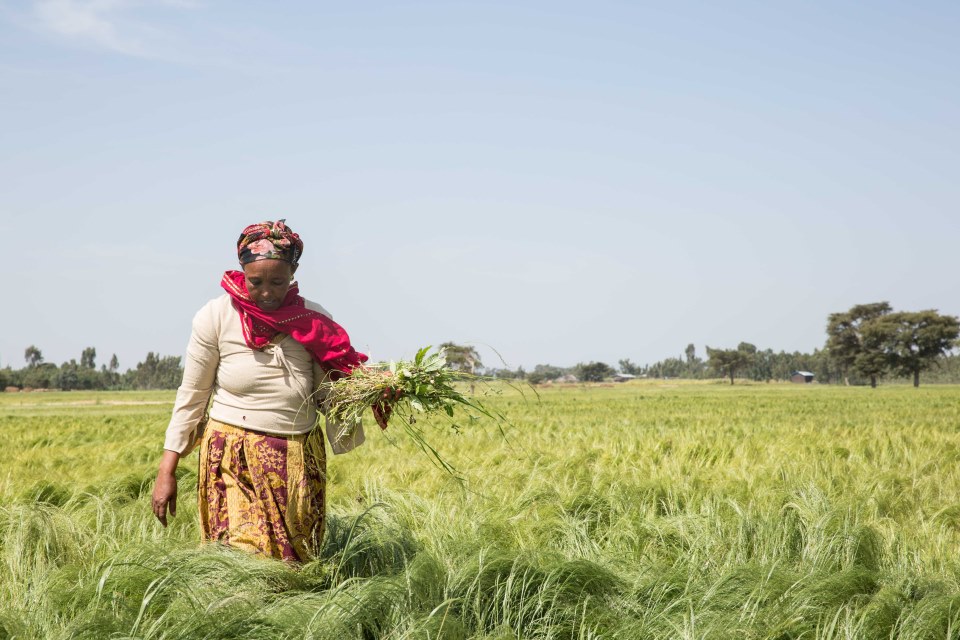Relearning to Live Like My Great-Great-Grandmother: Embracing Heritage Climate-Smart Crops for Health and the Environment
Blog by Francis Mwanza, Project Lead, Mwinimunda (Guardian of the Garden) and Senior Advisor for Heritage Crops for Global Child Nutrition Foundation (GCNF)
My great-great-grandmother, like many women of her time, lived in harmony with the earth, relying on traditional crops and farming practices that we might now call “climate-resilient”. These methods not only nourished her community but were sustainable and attuned to the natural world.
Today, as environmental challenges grow, there is much we can learn by looking back and rediscovering how to live as they did. This desire to reconnect with ancestral wisdom inspired me to set up the “Mwinimunda Heritage Homestead Project” in Lusaka, Zambia. The project focuses on nutritious, traditional, and indigenous food crops with a special focus on knowledge sharing.
The 1.1-hectare site, once part of a larger farm, is now surrounded by both high-density and low-density residential areas. Despite the urban setting, the project aims to revive indigenous crops (Increasingly referred to as opportunity crops) and traditional farming methods that have been forgotten or neglected over time. The goal is to inspire support for native crops, empower communities with knowledge of their rich culinary heritage, promote sustainable agricultural practices and inclusion of native crops in school feeding programs.

Francis Mwanza, founder and project lead of the Heritage Homestead Project on the hunt for heirloom seeds from local women seed collectors, the care takers of traditional seed banks
The 1.1-hectare site, once part of a larger farm, is now surrounded by both high-density and low-density residential areas. Despite the urban setting, the project aims to revive indigenous crops (Increasingly referred to as opportunity crops) and traditional farming methods that have been forgotten or neglected over time. The goal is to inspire support for native crops, empower communities with knowledge of their rich culinary heritage, promote sustainable agricultural practices and inclusion of native crops in school feeding programs

Garden for heritage crops and palaver hut for discussion and sharing knowledge
Inclusion of native or heritage or opportunity or climate-smart crops into school meal programs offers, for intents and purposes, a climate-smart solution for feeding children. By sourcing locally grown, traditional crops, schools can reduce the carbon footprint associated with transporting non-native foods. This would also help support local farmers and strengthen local food systems.
The infrastructure at Mwinimunda reflects these traditional values, with buildings designed based on heritage structures. We are building a classroom and information centre to provide education on climate-smart crops and traditional farming techniques. A community-style kitchen will allow for shared cooking experiences, where participants, particularly school children, will learn how to prepare these indigenous foods. The palaver hut – a traditional gathering place – serves as a meeting space for discussions, while a kraal has been adapted into an open-air classroom and entertainment area. Additionally, there’s a deck for group meetings, offering a comfortable spot for reflection and collaboration amid the natural landscape.
The infrastructure at Mwinimunda reflects these traditional values, with buildings designed based on heritage structures. We are building a classroom and information centre to provide education on climate-smart crops and traditional farming techniques. A community-style kitchen will allow for shared cooking experiences, where participants, particularly school children, will learn how to prepare these indigenous foods. The palaver hut – a traditional gathering place – serves as a meeting space for discussions, while a kraal has been adapted into an open-air classroom and entertainment area. Additionally, there’s a deck for group meetings, offering a comfortable spot for reflection and collaboration amid the natural landscape.
Already visitors have included architects and students of architecture who wanted to see how so-called native architecture can be mainstreamed; local seed collectors who helped plant crops (vegetables and cereals); a team from Zambian Ministry of Education focusing on (home-grown) school feeding; and doyens of Zambian music.
Relearning to live like my great-great-grandmother involves passing down this knowledge to the next generation – “today’s shrubs that will become tomorrow’s forests.” An important aspect of the project is to provide hands-on learning experiences, from harvesting to cooking in the community kitchen, and connecting these lessons to local schools and homegrown school meal programs. The future plan is to be able to provide seed packets to school children visiting Mwinimunda for planting at their homes or/and in school gardens where such exist.
At the homestead, I am relearning traditional ways by collecting seeds from “community seed banks” across Zambia (including those from my ancestral villages) and neighbouring countries in southern Africa. I am cultivating a variety of climate-smart crops that have adapted to local conditions over centuries. These crops are not only resistant to drought and pests but are also highly nutritious.

Kraal reconstructed as an open-air classroom/entertainment area, with community-style kitchen in the background under construction

Community seed bank member displaying local seed varieties
Some of the crops we are growing include sorghum, finger millet, cowpeas, pigeon pea, amaranth, cleome, African eggplant, spider plant, Hibiscus, Bambara groundnuts, Horned melon, blackjack and marama beans—crops that sustained communities long before modern monoculture farming practices took hold.
These heritage crops are incredibly resilient, requiring less water and hardly any chemical inputs compared to many modern varieties. They are vital in the fight against food insecurity and malnutrition. Sorghum, for example, is rich in antioxidants and gluten-free, making it an excellent alternative to wheat. Millet is another important crop, known for its high protein content and ability to thrive in arid climates. By relearning how to grow and cook with these traditional crops, we can nourish our bodies with nutrient-dense foods while also caring for the environment.
These heritage crops are incredibly resilient, requiring less water and hardly any chemical inputs compared to many modern varieties. They are vital in the fight against food insecurity and malnutrition. Sorghum, for example, is rich in antioxidants and gluten-free, making it an excellent alternative to wheat. Millet is another important crop, known for its high protein content and ability to thrive in arid climates. By relearning how to grow and cook with these traditional crops, we can nourish our bodies with nutrient-dense foods while also caring for the environment.
In addition to vegetables and cereals, we have planted over 60 local fruit and medicinal trees, including snot apple, baobab, tamarind, marula, neem, plantain, African olive, tree tomato, Soursop, African Star Apple, local berries and moringa—some of which are now recognised as “superfoods,” such as baobab (high in vitamin C, fiber, and antioxidants), Amaranth (a nutritious grain/vegetable, high in protein, fiber, and essential minerals), Moringa (“miracle tree,” moringa leaves are rich in vitamins, minerals, and antioxidants) and Hibiscus (known for its use in drinks and teas, hibiscus is high in vitamin C and antioxidants)
As the effects of climate change intensify, relearning to live like my great-great-grandmother is no longer a choice; it’s a necessity. By returning to the wisdom of the past, we can protect biodiversity, preserve the environment, and produce healthier food. These heritage crops, with their deep roots and ability to withstand harsh conditions, can help restore soil health, reduce erosion, and play a role in combating climate change.
This project is not just about reviving the past; it is about securing a sustainable, healthy, and connected future for ourselves and the generations to come.
And if my great-great grandma were to come to Mwinimunda I would like her to at once recognise the (nutritious, climate-smart) vegetables, cereals, fruits and medicinal trees and shrubs and remind her seed bank she jealously guarded for the future, our present!
About the Author:
Francis Mwanza is a researcher and writer on African and local foods, and formerly the London head of office for the World Food Programme. He is undertaking a project to repatriate ‘lost’ local seeds and promote African food heritage in his home country of Zambia, with emphasis on underutilized, nutritious, and resilient local foods.













No comment yet, add your voice below!